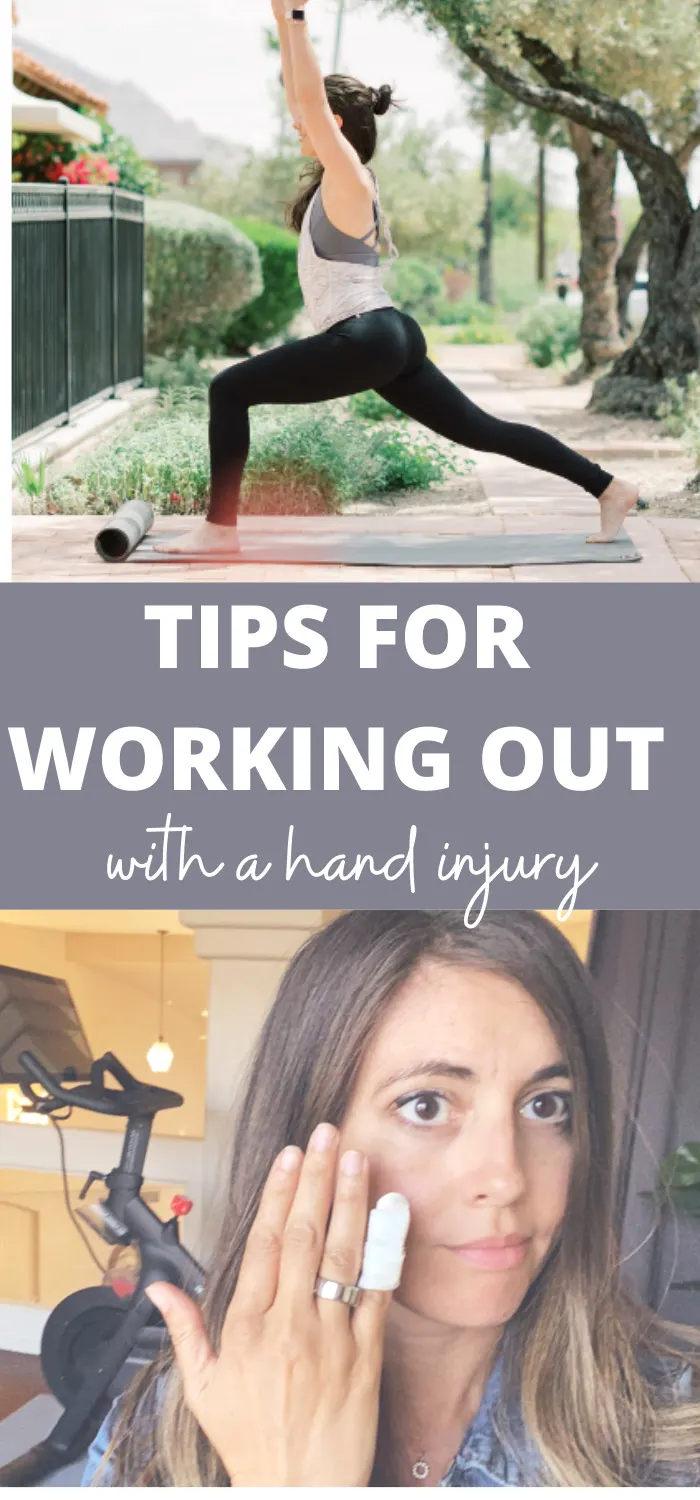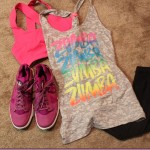Tips for working out with a hand injury
Sharing my tips for how to get in great workouts even while you have a hand injury. As ALWAYS, talk with your doctor about resuming or starting any exercise routine, particularly if you’re injured.
Hey friends! I hope you’re having a great day. I’m re-shairng this post from when I was injured with a broken finger and wanted to maintain my active life!
Workout-wise for me, things have been a little interesting. I was so proud of myself for finding a groove after the kids FINALLY went back to school full-time, and I had to go and fracture my pinky finger. (I also damaged the tendon. Cool bro.) So I’m in a splint and after a couple of weeks, I’ve finally gotten used to it. I wash dishes with one hand, type with 9 fingers, and accidentally get it wet at least once a day and have to change it. While I feel like I’ve adjusted to life with the splint, I’ve had to get creative on the workout front. No more super heavy upper body weights for now, and I’ve been focusing on lower body, cardio, and core.
Upper body injuries are easier to navigate than lower body injuries; I feel like you can do more since cardio isn’t deleted from the equation. I’ve been thankful that it’s just my pinky, not my whole hand, and that I’ve been able to make some adjustments. Since I’m no stranger to hand injuries (first there was Thumbgate, then my nerve repair surgery, and now this), I figured it was time to write a post about working out with a hand injury. Friendly reminder to always check with your doctor about your personal limitations and discuss any fitness changes with your healthcare professional.
Tips for working out with a hand injury
1. Yay for cardio! With my current hand injury, I’ve still been able to get in lots of endorphin-boosting and endurance building cardio. I hop on the Peloton, go for a run, take a dance cardio class, HIIT train, and hike. I did try a kickboxing class with my hand flat instead of fingers flexed, and it didn’t feel so great and I stopped after a few minutes. The key with cardio is to pay attention to how you feel and also notice how it affects healing/swelling. After long runs, my finger gets a little swollen, so I’ll ice it it a bit afterwards. I’ve also been using arnica for swelling and bruising, and my red light.
2. Go for core and lower body strength training exercises. When you have an upper body injury, core and lower body exercises are *usually* a safe bet.
Some of my go-to exercises during this time:
– Lunges
– Squats
– Good mornings (resistance band around my shoulders)
– Walking lunges
– Leg extensions
– Step-ups
– Calf raises
– Hip raises
– Single leg squats
– Curtsy lunges
– Barre workouts! It’s been so fun to be able to stick to the Barre Bootcamp 2.0 calendar for the most part, even with my injury
(Right now, I use wrist weights instead of dumbbells for barre)
– Any core work! I love Sculpt Society (<— my link gets you 30 days free) and I’m also a huge fan of barre and Pilates-based core workouts. They work my muscles in an entirely different way. I modify all planks by placing my hands on the wall, doing planks or side planks on my forearms, or dropping to my knees on the mat to decrease pressure on my hands. This is also a great time to emphasize mobility work.
How to get an upper body workout with a hand injury
3. Get creative with upper body work. I feel like with this injury, it’s been more more manageable for me to do endurance-based upper body work with bodyweight only or light wrist weights. (A great example of this is the Amanda Kloots arm series. You use zero weights but your arms are on FIRE afterwards!) I can’t really grip a lot, so I ordered some wrist weights from Amazon to do barre workouts. It’s perfect because I’m still getting resistance without putting anything in my hand! I use these for things like strength variations, like chest presses, upright rows, deadlifts, triceps extensions, and biceps curls.
4. Listen to your doctor. This should be #1 on the list but I’m putting it here for emphasis. Your doctor will give you the best guidelines for your healing journey FOR YOU. I’ve learned through injury, surgeries, and postpartum recovery that it’s so much better to WAIT and take the time to heal than it is to jump back into things too quickly and cause permanent damage. Impatience can hinder your recovery and set you back even longer than you initially would be. (For example, if your doctor tells you to take 6 weeks off, but you decide to work out anyway and you injure yourself or cause damage halfway through, you reset the healing timeline.) Be patient even though it’s hard, do what you can, and give yourself the grace and reassurance that you’ll come back even stronger. <3 Also, I highly recommend seeking out a physical or occupational therapist to help with your healing journey and ask your doctor for a referral. I’ll definitely be seeking out a hand specialist when all of this is over!
Have you ever been injured or had to take time off? What are some of the things that helped you?
xo
Gina


















This helped me alot. I fractured my metacarpal in the hand last Monday and although I’ve continued going to the gym I feel off due to not being able to lift. But instead of getting discouraged I’ll use this time to up my cardio. Great write up
hope you heal quickly, lawrence!